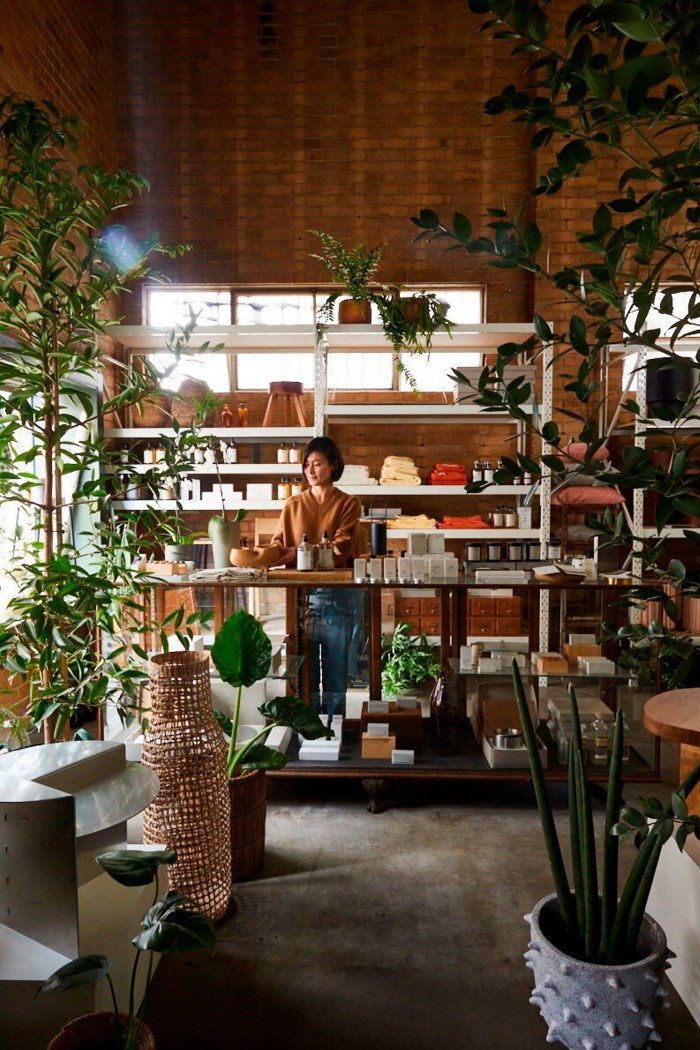Unlock the Editor’s Digest for free
Roula Khalaf, Editor of the FT, selects her favourite stories in this weekly newsletter.
Perhaps not a shock, but it looks as if one of Britain’s noblest holdouts of the postwar age, the garden centre, may be on uncertain ground in the era of climate change. And also not altogether unpredictably, it may be saved from despair by another institution-come-habit: the nation’s ageless thirst for tea and cake.
Traditionally a realm of pleasantly low-stakes investments — soil, bulbs, plants — plus the occasional challenging decision about a lawnmower, the garden centre has in the past few years found itself facing the hexes of climate change, tough trading (rent, rates and the rest) and stock surpluses from the Covid-19 boom times, when the centres were classed as “essential” and therefore remained open. Now to survive, it appears that a garden centre, big or small, simply must have a good café.
The only part of the industry that seems to be dependably thriving is catering; quite often catering of the modest treats variety. Savills’ latest research puts the proportion of UK garden centre income to derive from café/restaurant offerings at 14.9 per cent in 2023, more than doubling from 2021, when the figure was 7 per cent. At this point it would not surprise me if McKinsey and co had set up a Scones Division specialising in tea-based turnaround plans.
The broader outlook for the Great British Garden Centre is a bit like one of those plants you clock just as the tips turn crispy brown. Exactly how much trouble is it in? Could the leaf sickness spell a slow demise, or is it just a rough patch that can be rescued?

Although some businesses reported seasonal upticks and unseasonable weather downturns, sales overall merely whispered up by 2 per cent year on year in 2024, according to the Horticultural Trades Association. Tellingly, the HTA’s year-end report revealed that garden and gardening sales “fell 4 per cent across 2024 as a whole”. The “key plant categories” were unstable; not surprisingly given that what should have been sunny was soggy, and the colder months were mild. 2024 was the fourth-warmest year on record for the UK.
Patchy trading has had an effect. Dobbies, a Scottish and now nationwide 77-strong chain, once the largest in the UK, last year got the OK from the Scottish Court of Session for a restructuring plan — closing 17 stores, including all six of its newer urban-format Little Dobbies. This comes on the back of losses of £131mn, attributed to unseasonable weather and biting inflation. Homebase, meanwhile, went into administration in November, selling off the bulk of its sites to The Range.
Both the big-box garden centre and its more rural counterpart, tucked sleepily off a B-road somewhere, feel like unmodernised ideas. The garden centre’s roots trace back to the 1860s, but its real success was twinned with the rise of wages and home ownership in 1980s Britain, reflected in proudly kept back gardens and, in the idealised vision, streets burring on Sunday with the music of mowers and hedge trimmers. But this idyll, if it ever existed fully, requires not only economic stability but also a consistent supply of clockwork seasonal weather that the planet no longer offers, bringing something of a 40-year itch in the industry.
And then there’s ecommerce, in which Amazon’s UK monthly turnover for garden and outdoor sales stood in March 2024 at about £99.6mn, according to an Amazon marketing agency analysis. The green market has grown like jungle creep: where prewar Brits bought seed packets from counter-service grocers, now you can pick up plants almost anywhere — a lily from a garage shop, or a ficus in the last hall at Ikea.
The most unreformed of the old-style nurseries can seem less like a green oasis and more like a quiet time capsule. Some independent centres have tackled this problem by creating a wild herbaceous border of product offerings — adding everything from a carvery to a clothes shop and a gnome trail to tempt punters in. Research from both Savills and the HTA confirm that such diversification helps.

One model for the future could be set by places such as Solso Park in Tokyo — a plant and flower shop set around a courtyard, with a shaded terrace for drinks from the adjacent café. Rather than kicked out to the suburbs, it is just a short walk from the famously hectic Shibuya Crossing, and its bright branding suggests a desire to appeal to the gardening millennial. The recently opened rooftop nursery of Protoleaf in the Japanese capital’s upscale Tamagawa district also creates a chic aesthetic worthy of a department store; nudging people to impulse-buy plants in the way they might a jumper. Melbourne’s Plant Society does something similar, combining houseplants with bougie, curated homewares.
Whenever I visit — or even think about — an old-school British garden centre, I feel instantly wistful. Part of this might be the sense that plants and the planet have a long and lovely summer behind them, as out of reach as a station from a pulling-away train. Summer is no longer a dependable fact or temperature.
But at least plant shops are capable of preserving something special. The magic of plants is that they are more resilient than you think. I recently cut off half the browned leaves of a peace lily, and watched as it begrudgingly came back to life. Hopefully, the same revival can be true of the garden centre.
Natalie Whittle is author of “Crunch: An Ode to Crisps” (Faber & Faber)
Find out about our latest stories first — follow @ft_houseandhome on Instagram









